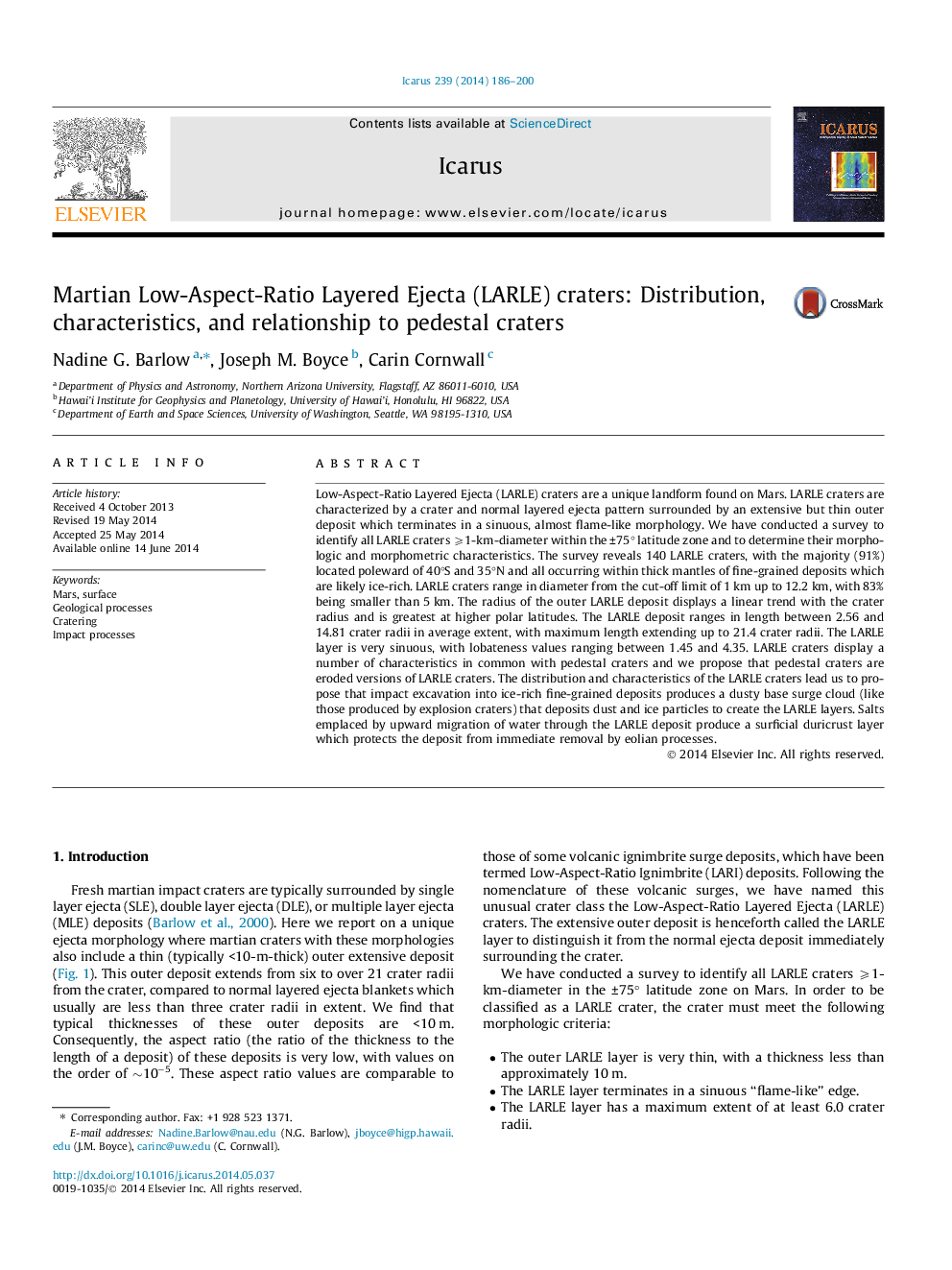| Article ID | Journal | Published Year | Pages | File Type |
|---|---|---|---|---|
| 8137947 | Icarus | 2014 | 15 Pages |
Abstract
Low-Aspect-Ratio Layered Ejecta (LARLE) craters are a unique landform found on Mars. LARLE craters are characterized by a crater and normal layered ejecta pattern surrounded by an extensive but thin outer deposit which terminates in a sinuous, almost flame-like morphology. We have conducted a survey to identify all LARLE craters ⩾1-km-diameter within the ±75° latitude zone and to determine their morphologic and morphometric characteristics. The survey reveals 140 LARLE craters, with the majority (91%) located poleward of 40°S and 35°N and all occurring within thick mantles of fine-grained deposits which are likely ice-rich. LARLE craters range in diameter from the cut-off limit of 1 km up to 12.2 km, with 83% being smaller than 5 km. The radius of the outer LARLE deposit displays a linear trend with the crater radius and is greatest at higher polar latitudes. The LARLE deposit ranges in length between 2.56 and 14.81 crater radii in average extent, with maximum length extending up to 21.4 crater radii. The LARLE layer is very sinuous, with lobateness values ranging between 1.45 and 4.35. LARLE craters display a number of characteristics in common with pedestal craters and we propose that pedestal craters are eroded versions of LARLE craters. The distribution and characteristics of the LARLE craters lead us to propose that impact excavation into ice-rich fine-grained deposits produces a dusty base surge cloud (like those produced by explosion craters) that deposits dust and ice particles to create the LARLE layers. Salts emplaced by upward migration of water through the LARLE deposit produce a surficial duricrust layer which protects the deposit from immediate removal by eolian processes.
Related Topics
Physical Sciences and Engineering
Earth and Planetary Sciences
Space and Planetary Science
Authors
Nadine G. Barlow, Joseph M. Boyce, Carin Cornwall,
